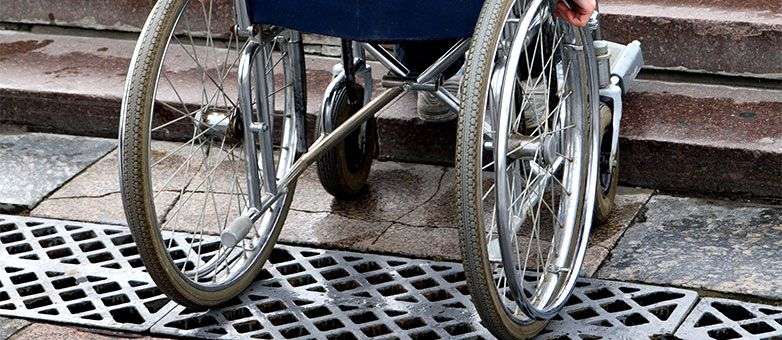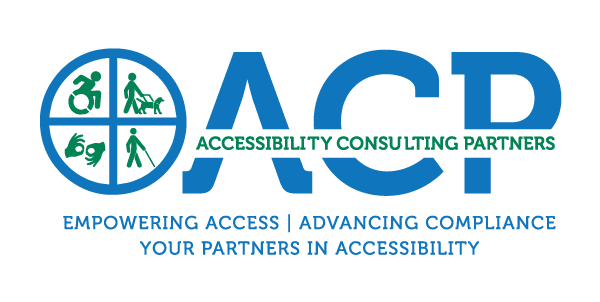As a Risk Manager for your municipality, you’ve just received a copy of the entity’s ADA Self-Evaluation/Transition Plan, and you may be feeling overwhelmed by the high number of non-compliant findings/barriers identified within your facilities. It is important to understand that you are not alone in feeling this way. The struggle is real! Addressing the allocation of resources to remediate these findings for compliance with the Americans with Disabilities Act (ADA) seems very overwhelming. In addition to the identified ADA barriers, there are frequent internal struggles to coordinate remediation efforts with multiple departmental leads who may be resistant to altering their current process of executing their tasks can be a struggle. Ideally, the Risk Manager works closely with your entity’s ADA Coordinator or other potential ADA team members.

“Risks that you control are much less a source of outrage than risks that are outside of your control.”
-Dr. Peter M. Sandman
The above quote reiterates that identified risks for which your entity has control are a primary consideration of where/how to approach planned remediation efforts. Working in collaboration with the ADA Coordinator and other ADA team members, it is essential to familiarize yourselves with specific facilities or rooms/spaces at those facilities where the entity has received multiple comments or grievances from either the public or employees. This helps you better understand, prioritize, and address specific risks.
The SE/TP document is the logical centralized location and tool for any entity to document all remediation efforts taken by the entity. Tracking the remediation efforts is the key to compliance with the intent of the ADA in the eyes of the Department of Justice. ADA Self-Evaluation/Transition Plans are a federal requirement for Title II entities. Accessibility Consulting Partners, Inc. (ACP) works with both Title II (state/local governments) and Title III (public accommodations) entities by providing a working Americans with Disabilities Act (ADA) Self-Evaluation/Transition Plan document containing identified physical barriers relating to entity owned/leased properties. ACP prioritizes identified barrier remediation efforts based on the Department of Justice’s general priorities and the specific entity’s factors like public presence and program activities. By identifying and addressing critical barriers with precision, ACP can provide useful information to assist the entity in allocating resources efficiently and driving meaningful accessibility improvements.
Risk Management requires a prioritization process to be followed where the risks with the most significant loss (or impact) and greatest probability of occurring are addressed first. Risks with a lower likelihood of occurring and lower loss are addressed in descending order. In practice, the process of assessing overall risk can be complex, and balancing resources used to mitigate between risks with a high probability of occurrence but lower loss versus a risk with a high loss but lower probability of occurrence can often be misaddressed.

Owned or leased facilities and sites where many ADA concerns are identified and where high-volume public engagement occurs should be prioritized with increased urgency to remediate the non-compliant ADA findings to reduce the entity’s exposure to potential risk. Keep in mind this includes not only permanent facilities/sites but also temporary event locations where Title II programs or activities occur, such as at a Street Fair or Farmers Market. It is imperative to understand that risks may occur anywhere at any time. Your entity’s efforts for ADA compliance is an ongoing process involving far more than just the physical barriers within owned/leased facilities and sites, such as web accessibility, employment processes, and program access concerns.

Documentation and tracking of ADA barrier mitigation within your SE/TP is not only critical for record keeping purposes, but in the event the DOJ becomes involved via a Project Civic Access assessment, they will determine required timelines for remediation efforts, throwing all your planning and budgeting efforts out the window. Proving that you have an SE/TP and are actively “working,” this plan is the best-case scenario when/if the DOJ gets involved.
Partnering with ACP can help navigate the ADA’s complex requirements. Developing an internal ADA team consisting of departmental liaisons may be advantageous in executing your remediation efforts. Managing risk is a balancing act, particularly when it comes to ADA compliance. Approaching risk as a unified team can bring forth the most effective outcomes for both the entity and the public it serves.
